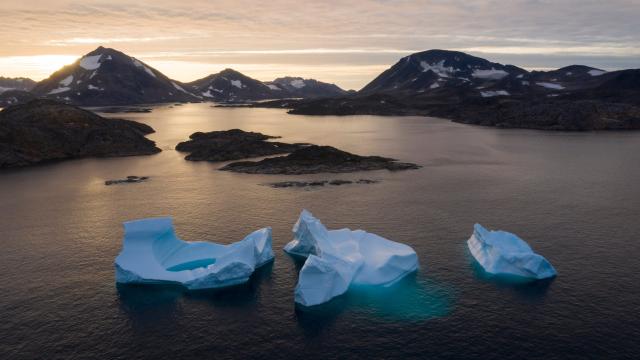In the already-glum world of climate research, tipping points are one of the least rosy areas of study. The collapse of crucial systems in response to passing certain levels of planetary heating isn’t exactly uplifting stuff.
A new study out in Nature on Wednesday is about as good as it gets, showing that we may be able to bring some key aspects of the planet back from the brink if we reduce warming in a timely enough manner. So, uh, cheers to that.
The researchers focused on a handful of climate buffers that keep Earth’s climate in balance and also provide sustenance and livelihoods for billions of people. Among them are the Amazon rainforest, the polar ice caps, the Indian monsoon, and a key ocean current in the Atlantic. All are vital life support systems, yet they’re under threat by the experiment the oil industry and other polluters have decided to conduct in the atmosphere.
Rising carbon dioxide levels are pushing global temperatures higher. And the worry for each of these key systems — as well as others, such as the Great Barrier Reef — is that, once you cross a certain temperature threshold, they collapse or shift into a new state that humans have never dealt with. If enough heat and attendant drought cook the Amazon, for example, it could permanently turn into savannah in a relatively short period of decades. Figuring out what thresholds of warming could lead to this and other tipping points is important.
The new research looks at another key element: timescales. Specifically, if the world crosses a warming threshold and then cools back below it, can these systems be saved? To undertake the study, researchers created simple models that identified when tipping points would be reached for each of these systems. For the researchers, simplicity here was actually a major plus compared to more complex climate models.
“Simple models allow us to study the key underlying dynamics (which allows us to identify that the structure is similar across multiple types of tipping point), whereas the more sophisticated climate models tend to be a bit more of a mystery/’black box’ in understanding all the processes,” Paul Ritchie, a postdoc at the University of Exeter who led the research, said in an email.
With the current in the Atlantic — known as the Atlantic Meridional Overturning Circulation, or AMOC, if you want to impress your friends — previous research pegged the key threshold as around 3 to 5 degrees Celsius. The model they created for that pegged the tipping point right in the middle of that, at 4 degrees Celsius.
They then ran their models and explored what would happen if the world crosses that threshold and then cools below it to levels outlined in the Paris Agreement. The results showed that the tipping point for big, slow systems like the AMOC actually take hundreds of years. The ocean would enter what researchers have dubbed a “melancholia state” (relatable) as the circulation shuts down relatively slowly from human standpoint but quickly from a geological one. The results also show that reducing warming fairly rapidly after crossing the 4 degrees Celsius threshold could actually pull the system back out of collapse. Recent research has also shown that the AMOC may already be on the brink of collapse, so clearly this an active area of research.
The findings show similar results for the ice cap at the top of the world. That’s where the kinda-sorta-good-news ends, though. The Amazon and Indian monsoon are both relatively smaller systems. Research on the Amazon published last year found it could collapse in the coming decades, and the threshold of warming for that tipping point is much lower. Should that tipping point occur, it would last only on the order of decades or even years. Once that tipping point is passed, there’s likely no coming back. The monsoon is slightly more robust, but it still isn’t likely to recover if peak heat above the collapse threshold is sustained for a few decades.
The other piece of bad news here is that, if we’ve reached the AMOC tipping point threshold of warming, we’re probably going to have bigger things to worry about. A world that’s 4 degrees Celsius warmer is one where swaths of the planet are uninhabitable, billions of people are food insecure or forced to migrate, and sea level rise has essentially made Florida an archipelago. The century-long collapse of the AMOC will be among the least of humanity’s problems.
Given the importance of knowing which key systems could shut off or change and when, it’s clear more research is urgently needed to pin down tipping points — and if they can be reversed. Ritchie noted that the distinction between the temperature threshold that can trigger a tipping point and when the tip itself starts to happen is an important one to understand. Of course, it would be in everyone’s best interest to not ever test which of these research hypotheses is actually true, which means reducing carbon emissions ASAP.
“This is a ‘good’ news story, but still requires climate action to be taken now,” Ritchie said. “Ultimately, the safest option is not to cross climate tipping thresholds in the first place.”
Update, 4/21/21, 11:12 a.m.: This post has been updated with comments from Paul Ritchie.
